Studies of culture densities relevant to restocking efforts and aquaculture development
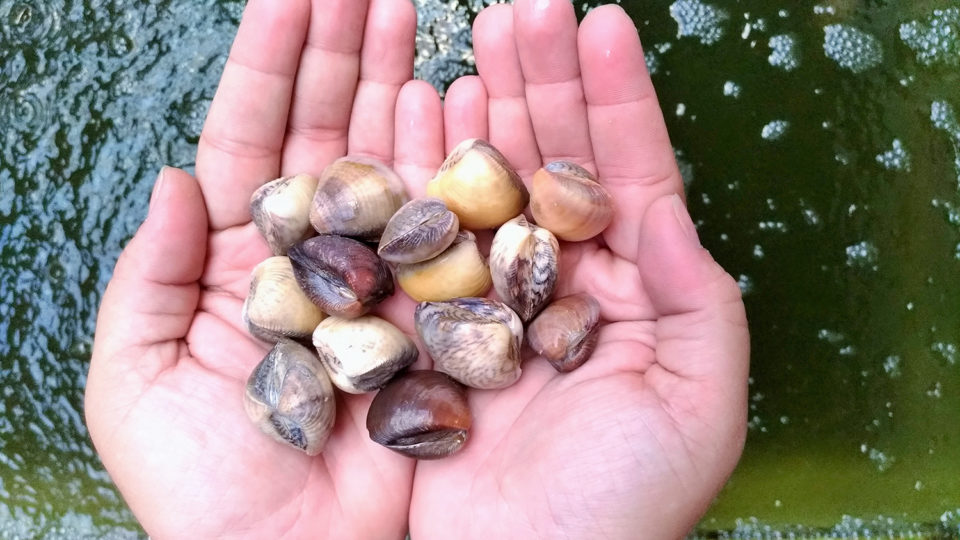
The farming of mollusks is an important component of aquaculture around the world, but the viable culture of many valuable species still faces various obstacles, including the lack of proper methodologies for domesticating native species.
The West Indian pointed venus (Anomalocardia brasiliana) is a fishing resource of great importance for Brazilian fisheries. This bivalve mollusk occurs naturally in shallow waters, particularly in mangrove lagoons, and is found in the intertidal zone down to a depth of 1.5 meters, where it buries in muddy bottoms. Adults typically settle in with fine or coarse sand areas where environmental conditions are harsher during low tides.
The fisheries of A. brasiliana are based on extraction in natural banks by inhabitants of coastal communities, and uncontrolled exploitation and environmental degradation can compromise its populations. In the state of Pernambuco in northeast Brazil, the traditional communities that capture the species have reported a reduction in the size of individuals harvested, even though there are no recent data on production or fishing in the state.
Such declines in the natural bank populations of bivalve molluscs throughout the world have provided the incentive for studies on their larviculture, because the production of juveniles in hatcheries and laboratories is an alternative to mitigate and supply seedstock to help support the extractive demand on natural stocks and for the development of mariculture operations.
We are studying the reproductive development of A. brasiliana in closed systems at the Sustainable Mariculture Laboratory of the Fisheries and Aquaculture Department, Federal Rural University of Pernambuco in northeastern Brazil, and here report on some of our results developing larviculture methods for this species.
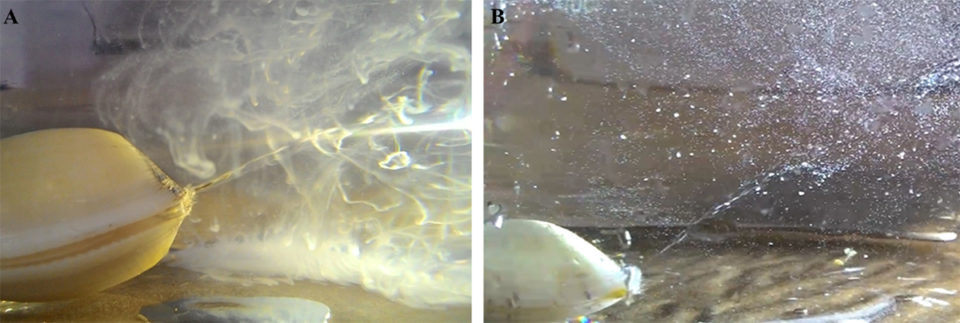
Study of veliger stage development
In the first experiment, the effect of stocking densities (2, 6 and 10 larvae/mL) on veliger larvae was evaluated. The animals were fed microalgae – Chaetoceros calcitrans and Isochrysis galbana – at a 1:1 ratio and concentrations of 30,000 cells/mL. The larvae used in the first experiment had an initial length of (88.76 ± 3.75 mm; see image below), and were cultured for seven days, when the morphological differentiations of metamorphosis begin.
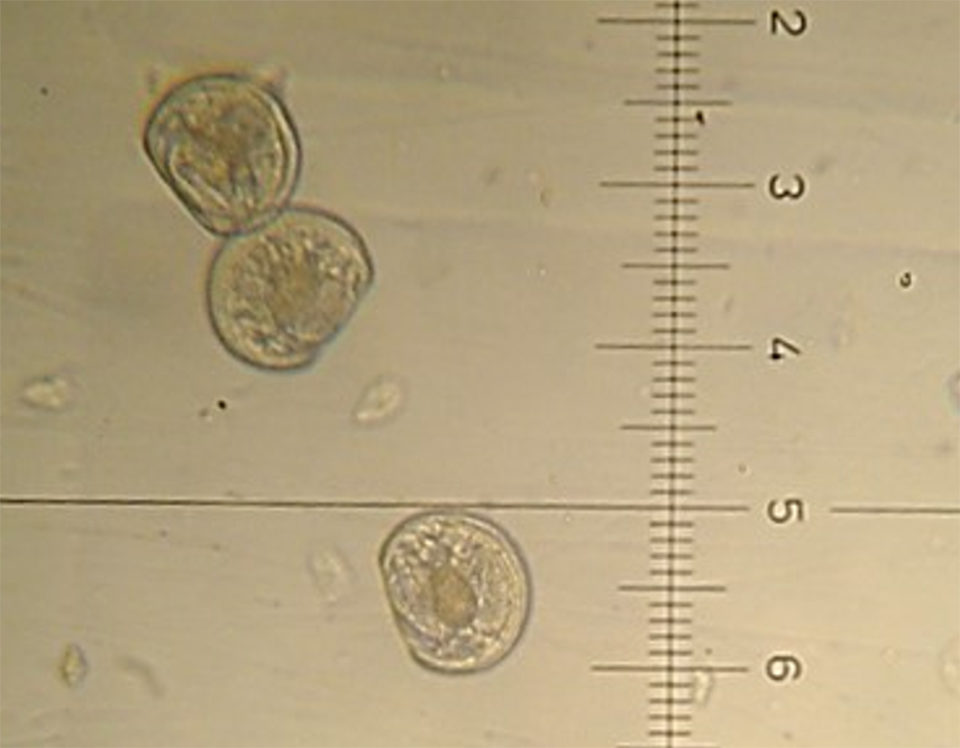
Study of post-larvae development
We evaluated the effect of stocking density on the growth and survival of A. brasiliana post-larvae (at 15 days of age; see image below). Three densities were evaluated: 40, 80 and 160 post-larvae per cubic centimeter. The specimens (307.89 ± 50.92 mm in average length) were fed two microalgae – C. calcitrans and Palvova lutheri –at a 1:1 ratio and a different algal concentration in each larval stage. This experiment lasted 28 days.
In both experiments, proper management ensured that the water quality parameters were within optimal ranges.
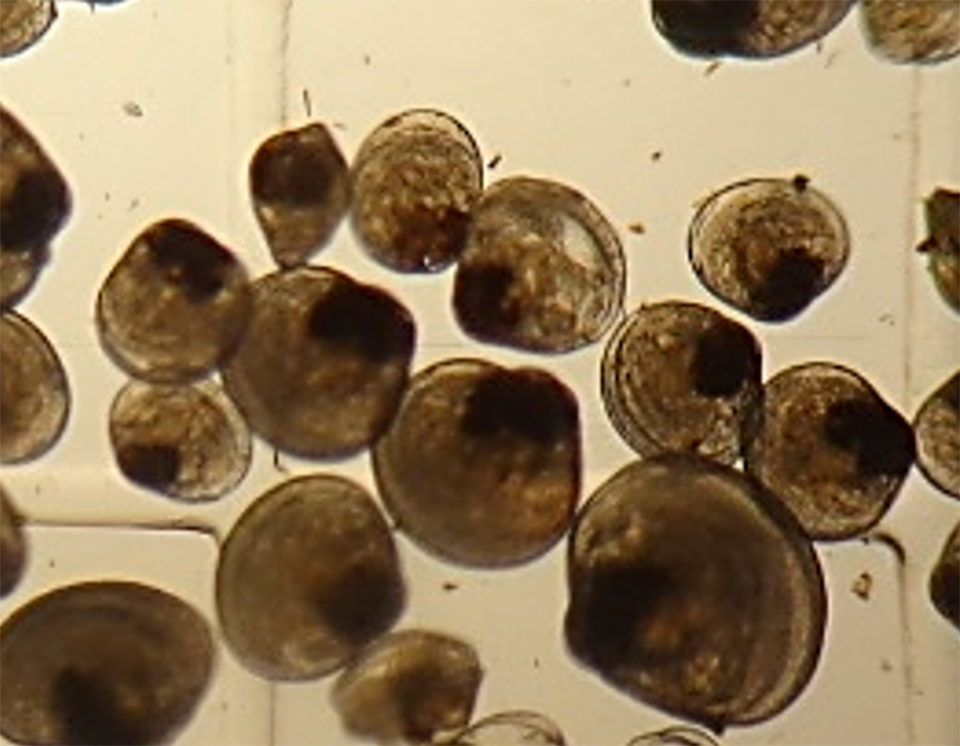
Results
In the first test, the survival of A. brasiliana veliger larvae was higher using the densities 2 and 6 larvae/mL (Fig. 1). At the end of the experiment, the treatments with 2 and 6 larvae/mL had the best results of survival and growth, 55.91 percent and 166.80 μm, and 65.55 percent and 155.95 µm, respectively. They differed significantly from the treatment with 10 larvae/mL, both in survival and in growth. After seven days, the animals cultured at the densities of 2 and 6 larvae/mL grew from 88.76 mm to about 160 mm of length.

In the second experiment, post-larvae at densities of 40 and 80 animals per cubic centimetershowed similar survivals, about 53 percent (Fig. 2). However, post-larvae cultured at a density of 40 animals per cubic centimeter had a significantly larger length (1249.77 ± 27.08 µm). Post-larvae cultured at the highest stocking density (160 post-larvae per cubic centimeter) had lower average lengths of 791.21 µm (p <0.05) by day 28 of the experiment.
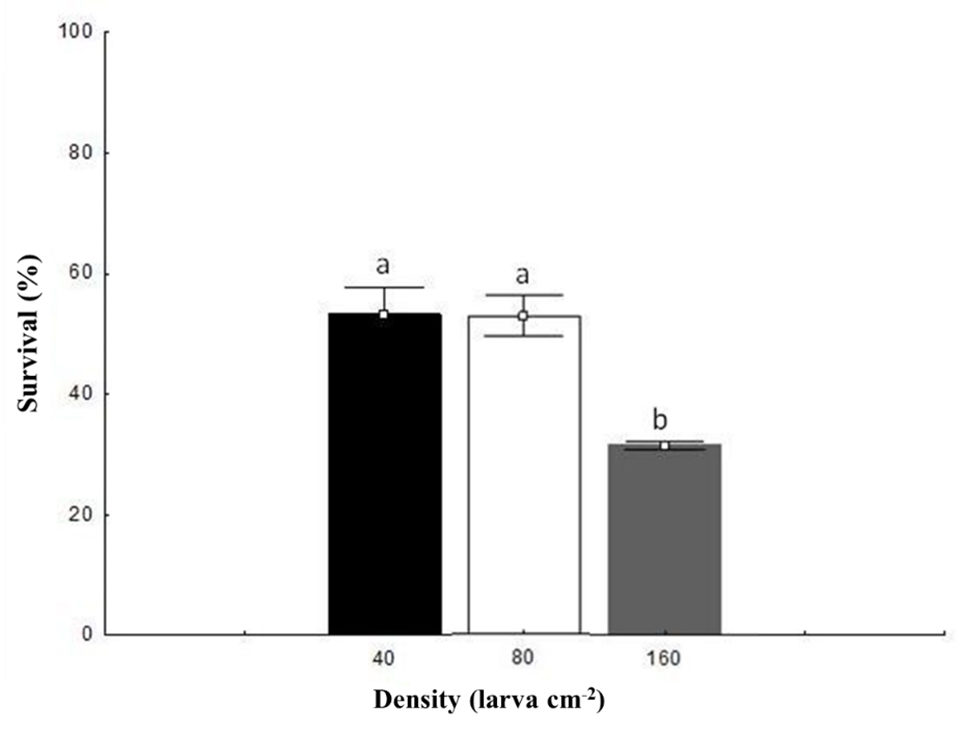
Because no differences in length were observed during the first 21 days of culture at the three densities tested, we suggest the use of the highest density (160 post-larvae per cubic centimeter) up to 21 days, and then reducing the culture density to 40 post-larvae per cubic centimeter until animals reach the desirable length.
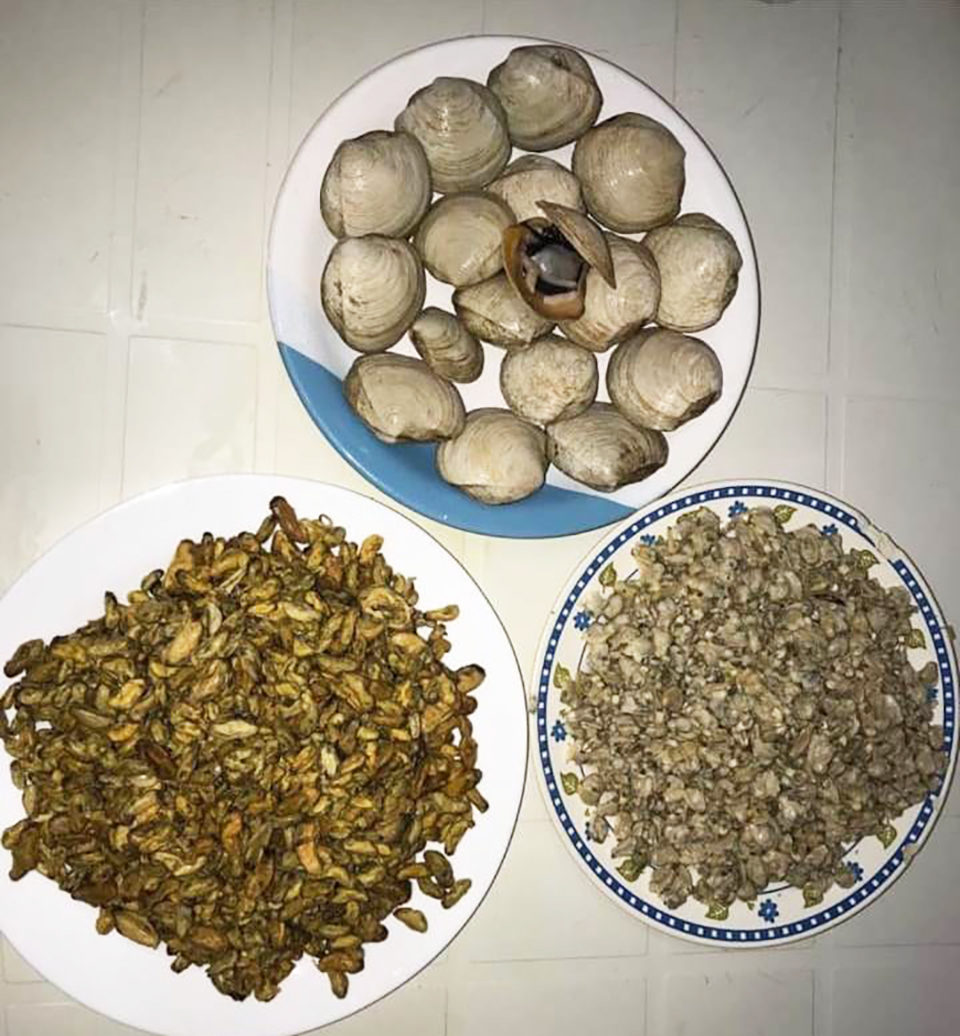
Perspectives
Our results show that density interferes in the development of larvae and post-larvae of A. brasiliana grown in a static system. We can conclude that the density for veliger larvae should be 6 larvae/mL and 160 post-larvae per cubic centimeter after settlement. This density can be used until the post-larvae reach 600 μm in length, then they should be in density of 40 post-larvae per cubic centimeter.
These results are very relevant to restocking efforts to support the extractive fisheries from natural banks and also for the development of aquaculture of A. brasiliana.
Now that you've finished reading the article ...
… we hope you’ll consider supporting our mission to document the evolution of the global aquaculture industry and share our vast network of contributors’ expansive knowledge every week.
By becoming a Global Seafood Alliance member, you’re ensuring that all of the pre-competitive work we do through member benefits, resources and events can continue. Individual membership costs just $50 a year. GSA individual and corporate members receive complimentary access to a series of GOAL virtual events beginning in April. Join now.
Not a GSA member? Join us.
Authors
-
Priscilla Celes Maciel de Lima, M.Sc.
Universidade Federal Rural de Pernambuco
Fisheries and Aquaculture Department
Recife, Brazil -
Dr. Danielli M.M. Dantas
Universidade Federal Rural de Pernambuco
Academic Unit of Serra Talhada
Serra Talhada, Brazil -
Dr. Isabela Oliveira
Instituto Federal de Educação
Ciência e Tecnologia de Sergipe
Campus Estância
Estância, Brazil -
Jéssika Lima de Abreu, M. Sc.
Universidade Federal Rural de Pernambuco
Fisheries and Aquaculture Department
Recife, Brazil -
Eng. Carlos Yure Barbosa de Oliveira
Universidade Federal de Santa Catarina
Aquaculture Department
Florianópolis, Brazil -
Prof. Dr. Alfredo Olivera Gálvez
Corresponding author
Universidade Federal Rural de Pernambuco
Fisheries and Aquaculture Department
Recife, Brazil[109,111,99,46,111,111,104,97,121,64,118,105,108,111,95,111,100,101,114,102,108,97]
Tagged With
Related Posts

Innovation & Investment
Artemia, the ‘magic powder’ fueling a multi-billion-dollar industry
Artemia, microscopic brine shrimp used as feed in hatcheries, are the unsung heroes of aquaculture. Experts say artemia is still inspiring innovation more than 50 years after initial commercialization. These creatures are much more than Sea-Monkeys.

Aquafeeds
Live diets for larval fish, shrimp: Production, enrichment, feeding strategies
Live diets for reared marine larvae must be cost-effective and versatile while providing good nutrition and being easily captured and digested. Copepods offer superior nutritional value, but their rearing requires space and is laborious.

Intelligence
Uncertain times for oyster larvae production in North America
Oyster larvae producers say information sharing and perseverance are seeing them through a prolonged stretch of high larval-stage mortalities.

Responsibility
Aquaculture gives endangered totoaba a fighting chance
The tenuous fate of a pint-sized porpoise, the critically endangered vaquita, is linked to a fish targeted by poachers fueling China’s appetite for maws. The vaquita remains in peril, but aquaculture presents some hope for the totoaba.


